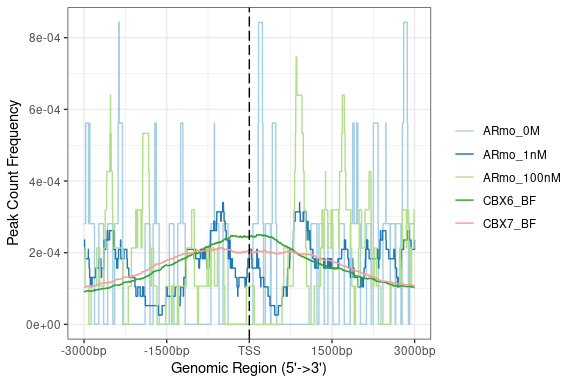Hello,
We are currently looking at CUT&Tag data from mice where we are comparing WT and knock-in samples and also Male vs. female using the three histone modifications K27me3, K27ac, and K4me1. We carried out peak calling using SEACR and then differential peak calling using Diffbind. Now, we want to go back to the raw peak data and just plot the normalized peak data. Can i use the dba.normalize function to normalize the raw peaks and then save it to a bed file which can be used to plot? I want to plot average profile of the peaks around the TSS region using ChipSeeker. I have used the dba.normalize function. I was just wondering how I could provide this normalized peak data to ChipSeeker so I can plot it. I don't know if this is a naive question because I went through the diffbind tutorial and couldn't find anything specific to normalizing and saving the peak file. Any help or suggestions are appreciated. Thank you so much!



I'm not sure exactly what you are asking when you refer to "peaks for just the replicates".
To retrieve normalized read counts for a specific subset of sample, use the
peaksparameter to indicate which samples you want peak data for (either amaskor a vector of sample numbers). For example:If you only want to merge peaks for a specific subset of samples, use the
dba()function first to narrow down the samples, then count those merged peaks. For example:Also, you can plot peak profiles using normalized data, including profiles for merged replicates, using the
dba.plotProfile()function directly.